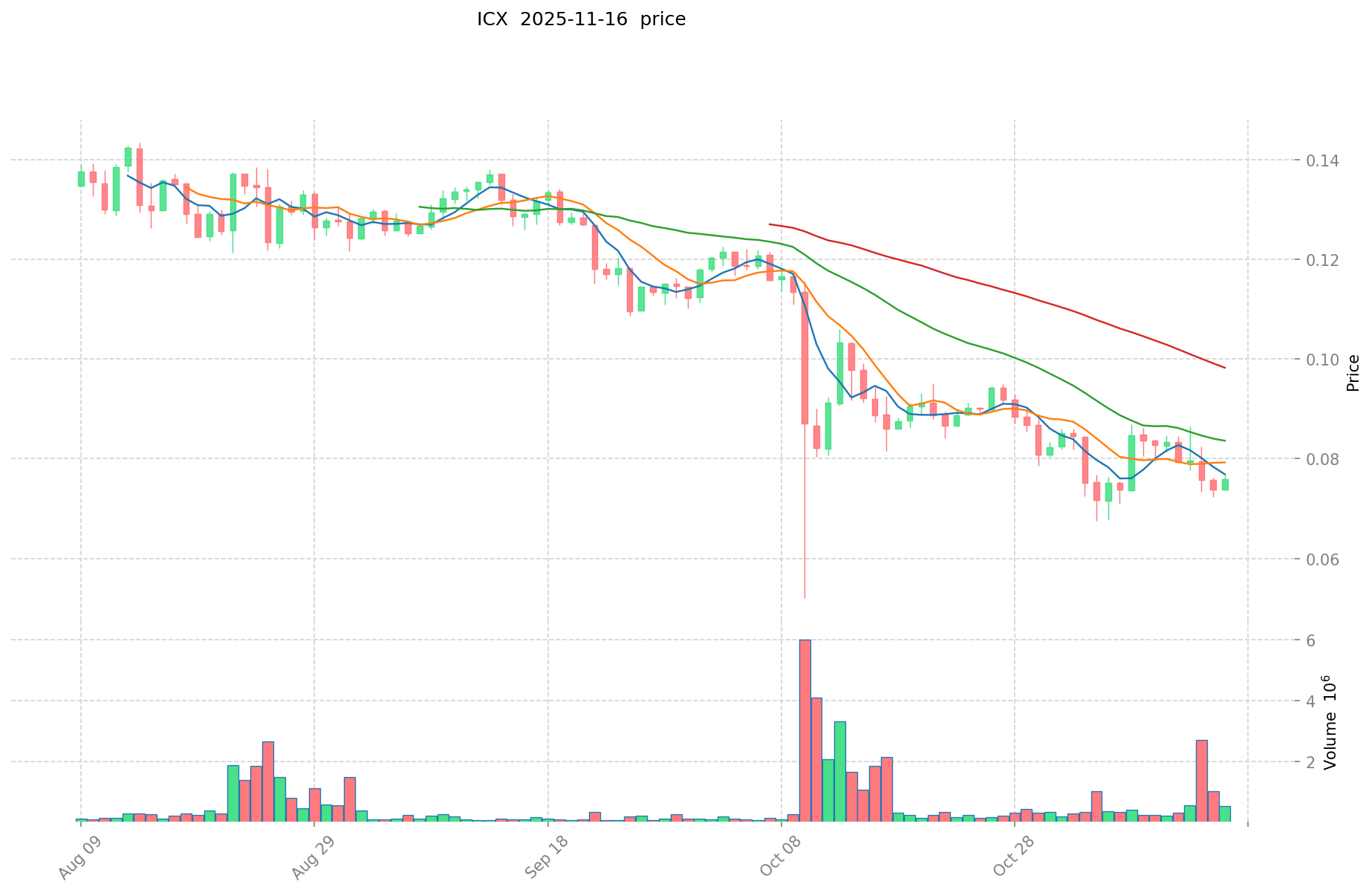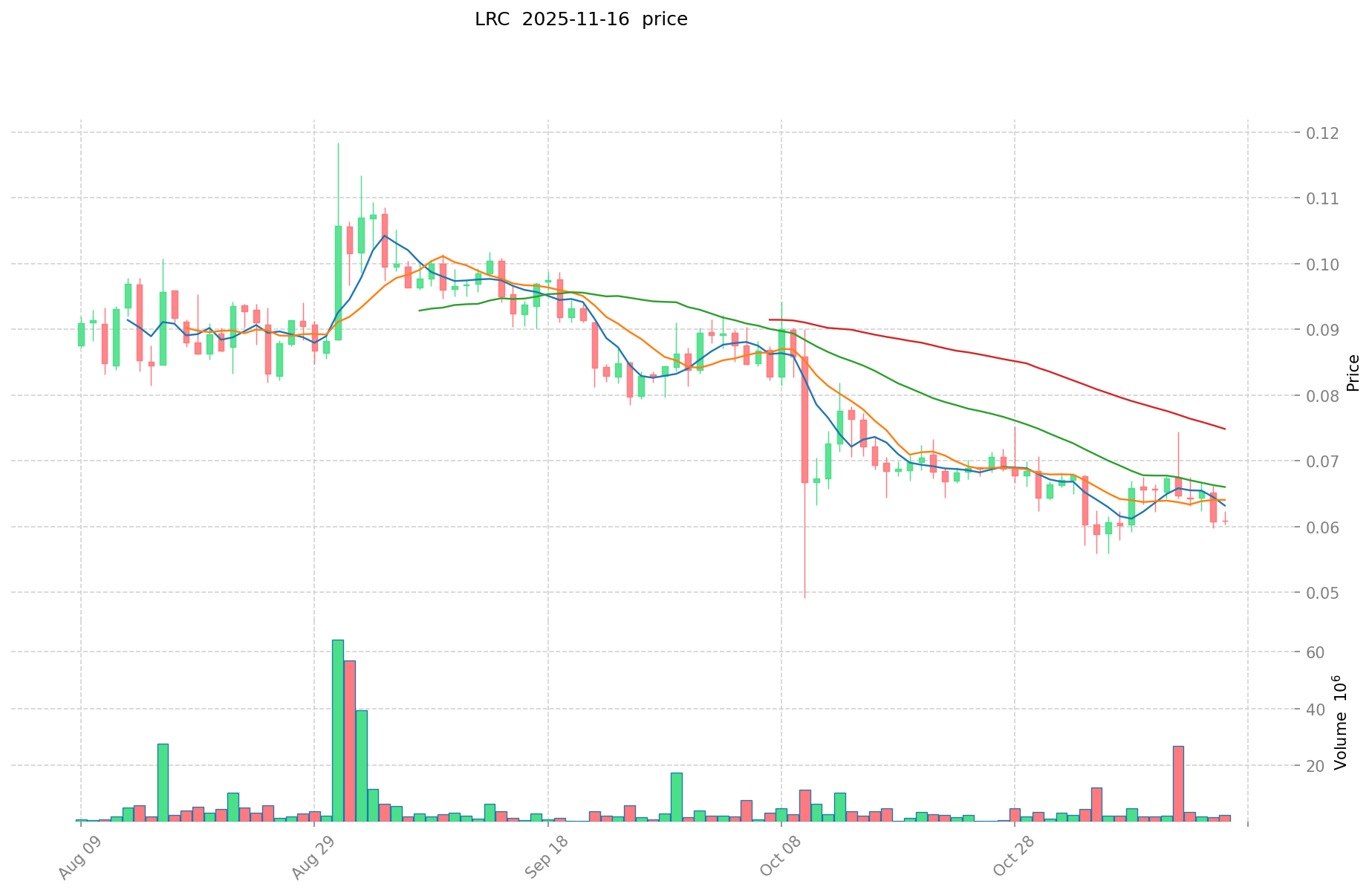ICX vs LRC: Comparing Two Prominent Blockchain Projects in the Crypto Ecosystem
Introduction: Investment Comparison of ICX vs LRC
In the cryptocurrency market, the comparison between ICON vs Loopring has always been an unavoidable topic for investors. The two not only have significant differences in market cap ranking, application scenarios, and price performance, but also represent different positioning in the crypto asset space. ICON (ICX): Since its launch in 2017, it has gained market recognition for its positioning as a decentralized network connecting various independent societies through blockchain. Loopring (LRC): Introduced in 2017, it has been hailed as an open multi-token trading protocol based on ERC20 and smart contracts, providing a zero-risk token exchange model. This article will provide a comprehensive analysis of the investment value comparison between ICON vs Loopring, focusing on historical price trends, supply mechanisms, institutional adoption, technological ecosystems, and future predictions, attempting to answer the question investors care about most:
"Which is the better buy right now?"
I. Price History Comparison and Current Market Status
ICON (ICX) and Loopring (LRC) Historical Price Trends
- 2018: ICX reached its all-time high of $13.16 on January 9, 2018.
- 2021: LRC hit its all-time high of $3.75 on November 10, 2021.
- Comparative analysis: In the current market cycle, ICX has fallen from its ATH of $13.16 to a current price of $0.07328, while LRC has declined from its peak of $3.75 to $0.05915.
Current Market Situation (2025-11-17)
- ICX current price: $0.07328
- LRC current price: $0.05915
- 24-hour trading volume: ICX $17,266.33 vs LRC $127,951.43
- Market Sentiment Index (Fear & Greed Index): 10 (Extreme Fear)
Click to view real-time prices:
- Check ICX current price Market Price
- Check LRC current price Market Price


II. Core Factors Affecting ICX vs LRC Investment Value
Supply Mechanism Comparison (Tokenomics)
- ICX: Fixed total supply of 800 million tokens with an inflation rate that decreases over time
- LRC: Total supply capped at 1.375 billion tokens with a deflationary mechanism where protocol fees are used to buy back and burn LRC
- 📌 Historical pattern: Deflationary mechanisms like LRC's typically create stronger price support during market downturns, while ICX's decreasing inflation model provides more predictable supply growth.
Institutional Adoption and Market Applications
- Institutional holdings: LRC has gained more institutional interest due to its role in Ethereum's Layer 2 scaling solutions and zkRollup technology
- Enterprise adoption: LRC offers greater utility for decentralized exchanges and payment systems through its zkRollup technology, while ICX has stronger enterprise partnerships in South Korea
- Regulatory attitudes: ICX benefits from South Korea's progressive blockchain policies, while LRC faces more regulatory uncertainty as a DeFi token
Technical Development and Ecosystem Building
- ICX technical upgrades: BTP (Blockchain Transmission Protocol) for cross-chain interoperability
- LRC technical development: zkRollup technology for Ethereum scaling with up to 2000 TPS capability
- Ecosystem comparison: LRC has stronger positioning in DeFi through Loopring Exchange and payment systems, while ICX has broader enterprise applications through ICON's public-private partnerships
Macroeconomic and Market Cycles
- Inflation environment performance: LRC's deflationary mechanism potentially offers better protection during inflationary periods
- Macroeconomic monetary policy: Both tokens show correlation with overall crypto market trends during interest rate adjustments
- Geopolitical factors: ICX benefits from South Korea's growing blockchain initiatives, while LRC's value is more tied to Ethereum ecosystem growth and global DeFi adoption
III. 2025-2030 Price Prediction: ICX vs LRC
Short-term Prediction (2025)
- ICX: Conservative $0.043-$0.073 | Optimistic $0.073-$0.103
- LRC: Conservative $0.044-$0.059 | Optimistic $0.059-$0.087
Mid-term Prediction (2027)
- ICX may enter a growth phase, with prices expected in the $0.069-$0.139 range
- LRC may enter a growth phase, with prices expected in the $0.050-$0.122 range
- Key drivers: Institutional capital inflow, ETFs, ecosystem development
Long-term Prediction (2030)
- ICX: Base scenario $0.144-$0.162 | Optimistic scenario $0.162-$0.208
- LRC: Base scenario $0.080-$0.116 | Optimistic scenario $0.116-$0.156
Disclaimer: The above predictions are based on historical data and market analysis. Cryptocurrency markets are highly volatile and subject to rapid changes. These projections should not be considered as financial advice. Always conduct your own research before making investment decisions.
ICX:
| 年份 | 预测最高价 | 预测平均价格 | 预测最低价 | 涨跌幅 |
|---|---|---|---|---|
| 2025 | 0.103494 | 0.0734 | 0.043306 | 0 |
| 2026 | 0.12471027 | 0.088447 | 0.05837502 | 20 |
| 2027 | 0.1385522255 | 0.106578635 | 0.06927611275 | 45 |
| 2028 | 0.1752685652575 | 0.12256543025 | 0.080893183965 | 67 |
| 2029 | 0.174232887371887 | 0.14891699775375 | 0.123601108135612 | 103 |
| 2030 | 0.208431675906036 | 0.161574942562818 | 0.143801698880908 | 120 |
LRC:
| 年份 | 预测最高价 | 预测平均价格 | 预测最低价 | 涨跌幅 |
|---|---|---|---|---|
| 2025 | 0.0872004 | 0.05932 | 0.0438968 | 0 |
| 2026 | 0.10622729 | 0.0732602 | 0.044688722 | 22 |
| 2027 | 0.1220514932 | 0.089743745 | 0.0502564972 | 50 |
| 2028 | 0.110133523864 | 0.1058976191 | 0.068833452415 | 77 |
| 2029 | 0.1242179072043 | 0.108015571482 | 0.08965292433006 | 81 |
| 2030 | 0.155596430719821 | 0.11611673934315 | 0.080120550146773 | 94 |
IV. Investment Strategy Comparison: ICX vs LRC
Long-term vs Short-term Investment Strategy
- ICX: Suitable for investors focused on enterprise blockchain adoption and cross-chain interoperability
- LRC: Suitable for investors interested in DeFi growth and Ethereum scaling solutions
Risk Management and Asset Allocation
- Conservative investors: ICX: 40% vs LRC: 60%
- Aggressive investors: ICX: 55% vs LRC: 45%
- Hedging tools: Stablecoin allocation, options, cross-token portfolio
V. Potential Risk Comparison
Market Risk
- ICX: Heavily influenced by South Korean blockchain initiatives and adoption
- LRC: Dependent on Ethereum ecosystem growth and DeFi market trends
Technical Risk
- ICX: Scalability, network stability
- LRC: Smart contract vulnerabilities, zkRollup technology risks
Regulatory Risk
- Global regulatory policies may impact LRC more due to its DeFi focus, while ICX benefits from South Korea's supportive blockchain stance
VI. Conclusion: Which Is the Better Buy?
📌 Investment Value Summary:
- ICX advantages: Strong enterprise partnerships, cross-chain interoperability potential
- LRC advantages: DeFi utility, Ethereum scaling solution, deflationary mechanism
✅ Investment Advice:
- New investors: Consider a balanced approach with slightly higher allocation to LRC for DeFi exposure
- Experienced investors: Explore strategic positions in both, with emphasis on ICX for long-term enterprise blockchain growth
- Institutional investors: Evaluate LRC for its role in Ethereum scaling and DeFi, while considering ICX for diversification into enterprise blockchain solutions
⚠️ Risk Warning: Cryptocurrency markets are highly volatile. This article does not constitute investment advice. None
VII. FAQ
Q1: What are the key differences between ICX and LRC? A: ICX focuses on connecting independent blockchain networks and has strong enterprise partnerships in South Korea. LRC is designed for decentralized exchanges and Ethereum scaling solutions using zkRollup technology.
Q2: Which token has performed better historically? A: LRC reached its all-time high more recently in 2021 at $3.75, while ICX hit its peak earlier in 2018 at $13.16. Both have since declined significantly from their highs.
Q3: How do their supply mechanisms differ? A: ICX has a fixed total supply of 800 million tokens with a decreasing inflation rate. LRC has a capped supply of 1.375 billion tokens with a deflationary mechanism that burns tokens using protocol fees.
Q4: Which token is expected to perform better in the long term? A: Long-term predictions for 2030 show ICX with a higher potential price range of $0.144-$0.208, compared to LRC's $0.080-$0.156. However, these are speculative and subject to market conditions.
Q5: What are the main risks associated with each token? A: ICX is heavily influenced by South Korean blockchain initiatives and faces scalability challenges. LRC is dependent on Ethereum ecosystem growth and faces smart contract vulnerability risks.
Q6: How should investors allocate their portfolio between ICX and LRC? A: Conservative investors might consider 40% ICX and 60% LRC, while aggressive investors could opt for 55% ICX and 45% LRC. This should be adjusted based on individual risk tolerance and market analysis.
Q7: Which token is more suitable for institutional investors? A: Institutional investors may find LRC attractive for its role in Ethereum scaling and DeFi, while ICX could be considered for diversification into enterprise blockchain solutions. Both offer unique value propositions for institutional portfolios.
Share
Content